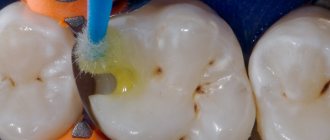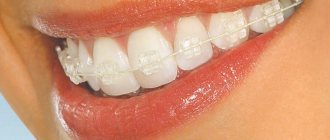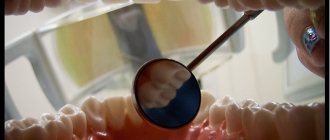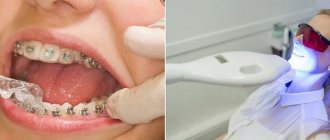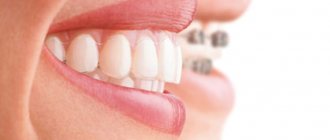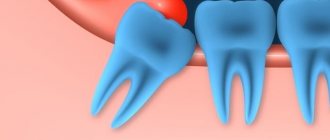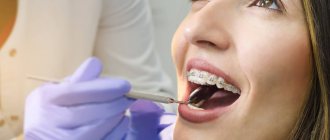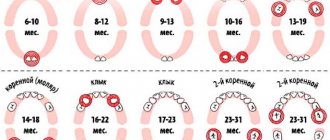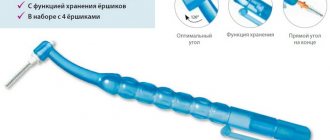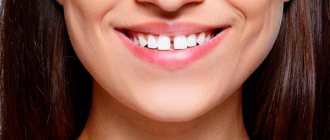Logic will help you get from point A to point B, imagination will help you get anywhere! Einstein
The most common questions we are asked by orthodontists around the world concern the shape of the arches and the sequence of their replacement.
This article will explain why we believe in Pitts Broad, a relatively new archwire design that provides the most esthetic solution in orthodontics today, and why the Pitts Broad archwire progression sequence is rational, effective, and simple. I have been working on the topic of arch shapes and arch sequences since my residency. During this time I have accumulated a lot of information. When I studied at the University of Washington from 1968 to 1970 under the tutelage of Drs. Richard Riedel and Alton Mohr, I was taught that to achieve stability, the shape and width of the arch should reflect the original shape of the dental arch before treatment. 35 years of collecting and processing information in the Department of Orthodontics at the University of Washington has led me to conclude that long-term stability is very unpredictable.
Picture 1:
The Evolution of Aesthetic Arch Shapes: A Preference for Pitts Broad Arches - Courtesy of Tom Pitts 2013
Figure 2:
Pitts Wide and Utility Arc Comparisons - Courtesy of Tom Pitts 2013
“Orthodontic treatment is inherently unstable and without retention, relapse is inevitable.”
Because of these advances, my clinical experience, and the clinical experience of the thousands of orthodontists I have taught and interacted with throughout my career, I believe in lifelong sleep retention after orthodontic treatment is completed.
Figure 3:
Aesthetic changes associated with changes in archwire shape due to the application of curves to corrective archwires - Courtesy of Tom Pitts 2013
Almost immediately after graduating from university in 1970, I attended the first FACE continuum, where I studied with Dr. Ron Roth. Dr. Roth imagined an arch in the shape of a horse's hoof, very wide at the front. Using this archwire for some time, I realized that treating clinical cases with archwires that are too wide and flat anteriorly and too narrow in the molar area does not create an aesthetically acceptable effect in the final phase of treatment.
Later, a group of innovative orthodontists with whom I collaborated (the A company Innovation Group) developed an arch shape that is sometimes called the Universal or Damon arch shape. This archwire shape has been consistently adopted by many orthodontists around the world and has proven to achieve more esthetic results than previous archwire shapes. I used the Universal and Damon arcs for many years and for me, it was still not enough.
Figure 4:
Aesthetic shapes are obtained by applying curves to the arches and become the basis for the wide Pitz arches (without distalizing the molars) - with permission from Tom Pitts 2013
During the treatment of patients, insufficient width in the posterior region was observed and further treatment with bends on the arches was required. The duration of such treatment from the stage of nickel-titanium arches to the stage of using corrective arches (TMA or stainless steel arches), where further alignment in the posterior area depends on the bends in the arch, takes from eight months to a year. This is effective, but not rational.
Figure 5:
The aesthetic goal is a wider smile, not too wide at the canine area, a delightful smile arc, full enamel alignment when smiling and optimal incisor inclination - courtesy of Duncan Brown
When I participated in the continuum of Dr. Robert Ricketts in 1975, I began to evaluate the treatment results achieved in terms of the aesthetics of the arch shape, offering less width at the canine site and greater width at the molar site. This arch shape resulted in a very aesthetic smile with a decrease in the space of the buccal corridors. I began to inherit this shape with the help of corrective archwires, gradually increasing the width in the molar area to maximize the filling of the buccal corridors with teeth. (Figures 1–3). The result is a reflection of modern concepts of dentistry, when the disposition of 12 teeth during a smile is considered the most aesthetic.
Figure 6:
Width and shape of the arch varies according to aesthetic purposes - courtesy of Duncan Brown 2016
Obviously, some “thinking outside the box” should, in turn, give impetus to the development of an entire system (bracket geometry, archwire shape, archwire sequence) that is rational, effective, easy to use, easy to teach, and allows the orthodontist to consistently achieve exceptionally aesthetic results . Fortunately, OS Orthodontics' corporate culture always strives for significant innovation.
Figure 7:
Aesthetic changes associated with a change in the shape of the dental arch created using a corrective arch – courtesy of Tom Pitts 2013
The orthodontic arch is the main one in the design of the bracket system
The classic version of the braces system includes:
- Braces are miniature plates made of metal, ceramic or medical sapphire, fixed to the surface of the enamel with a special adhesive composition. Each bracket has a slot for the archwire.
- An orthodontic arch is a metal wire that passes through the grooves of the braces and connects the plates into a single corrective system. The arch provides uniform traction and pressure to move the teeth.
- Ligatures are elastic rubber rings for attaching the arch in the grooves of braces. In non-ligating (self-ligating) systems, special locks are responsible for fixing the wire.
In case of serious malocclusion pathologies, the design of metal braces is reinforced with additional elements to improve the quality and speed of treatment.
Stage 2 – Torsion moment and shape correction in corrective arches
During the treatment phase with corrective arches, there are several alternatives: Without rotation: in cases with slight or minimal rotation, it is usually possible to achieve results with .020 x .020 beta titanium arches. This arch can be easily adjusted to individual aesthetic shape and correction of axial inclination of a single tooth. Clinicians should expect second-order bends, but axial tilt should be achieved (Figures 16–19).
Figure 18:
In the second stage, the clinician should expect to need to apply second order bends to the .020 x .020 archwires - Courtesy of Duncan Brown 2016
With rotations: In cases where rotational control is required, moving to a .025 arc is highly desirable. Since the torsional moment is present in the groove for some time, the axial tilt must be very well controlled for the following reasons:
- We prefer to transition from .020 x .020 thermoactive NiTi wires to .018 x .025 thermoactive NiTi wires in these patients, with corrective beta titanium wires .017 x .025 or .019 x .025 providing a similar finish for the most experienced passive user self-ligating braces.
- With inverted upper anterior brackets (either lateral incisor to lateral incisor or canine to canine), the .017 x .025 beta titanium archwire presents optimal torsional and rotational forces. We found out that arcs larger than these are simply not needed.
- In cases where greater torsional torque correction is needed, thermoactive .021 x .025 NiTi archwires are a good alternative, followed by .019 x .025 or .017 x .025 beta titanium for finishing
Thermoactive arc NiTi Ultra Soft .018 x .018 is a real breakthrough in technology. We begin treatment of many cases with this arch even when we include the second molars in treatment at the first visit. Very often after 6 weeks we change this arc to a thermoactive NiTi .020 x .020. In cases where more rotational control is required, thermoset NiTi .018 x .025 can be used before beta titanium .017 x .025.
Figure 19:
Good torsional moment control is present when flipping upper anterior brackets and canines with a .020 x .020 beta titanium archwire – courtesy of Duncan Brown 2016
Due to the greater compliance of H4 brackets, many clinicians are able to save several months of finishing time compared to previous passive self-ligating brackets by using the archwire sequence described above (Figure 20). We use thermoactive NiTi, not super-elastic NiTi, in all arc sequences.
Figure 20:
Simple Sequence for Changing Archwires Using .022 x .026 H4 Brackets - Courtesy of Tom Peetz
Don't clinicians want more effective, rational and simpler treatment mechanics? As we work with OS, we will always continue to introduce innovations that positively impact orthodontics, mainly from a sustainability perspective. Follow our innovations!
The principle of operation of braces for correcting malocclusion
- Based on the treatment plan, the orthodontist sets the orthodontic arch to the correct position of the patient’s dentition.
- After being fixed in the grooves of the braces, the metal wire tends to return to the specified reference position and pulls the teeth along with it.
- During the treatment, the power parts are changed and activated, increasing the pressure on the crowns and root system.
- The gradual movement of dental units forms the patient’s correct bite.
During the correction process, Aza&Buka orthodontists adhere to certain rules:
- Thin arc elements are installed first. Treatment begins with a weak impact so that the patient adapts to the orthodontic structure and does not experience severe pain.
- The load is increased gradually, increasing traction and pressure. The arches are changed to stiffer and thicker ones.
How to install an arc
After fixing the braces, the doctor begins installing the orthodontic arch. The first time it is installed in several steps:
- The wire is threaded into the grooves of the system.
- Fixed with ligatures or closing mechanisms.
- Correction of tension force and change of wire during treatment, for example, arch 16 for braces is changed to an arch of larger diameter according to indications.
Arch replacement is carried out during a scheduled visit to the orthodontist after immediate assessment of treatment progress. Depending on the type of braces, the specialist removes the ligatures or opens the locking mechanisms, removes the wire from the grooves, places and activates a new one. The replacement process is quick and painless.
On a note!
For several days after the procedure, the patient will experience some discomfort associated with increased stress on the teeth.
Types of arches for braces
The diameter and cross-sectional shape of the orthodontic arch are selected for each stage of treatment. The thinner the wire, the more gentle the effect. Correction of the bite begins with the installation of thin movable arches. Both parameters are taken into account simultaneously:
- Round cross-section with a diameter of 0.14-0.18 inches. Wires with low rigidity, increased elasticity and good mobility. Suitable for starting treatment - painless adaptation and getting used to the metal brace system.
- Arcs with a rectangular cross-section of 0.14-0.25 inches. Installed during the main period of correction - they provide an intense impact, are responsible for changing the shape of the dentition and moving individual units.
- Square cut arc with dimensions of 0.16-0.175 inches. The wire has maximum resistance - it does an excellent job of final alignment of the bite and creating correct occlusal contacts.
Orthodontic arches for braces are divided into:
- By purpose - for upper and lower teeth (Ulilier / Lower), for vestibular and lingual braces, universal.
- By size, taking into account the size of the teeth - large, medium, small.
Stages of treatment
Braces therapy takes place in three stages:
- Elementary. Round arches with a maximum degree of elasticity and minimum thickness are used. The most effective at this stage are products made of titanium and nickel, due to their moderate action, resistance to deformation and shape memory.
- Worker. The longest stage. Wires of rectangular cross-section are used to correct the shape and relationship of the jaw rows, and effectively move the roots and crowns of teeth.
- Final. At the final stage of therapy, in order to form full contact between the bite of the upper and lower jaw and the final alignment of the teeth, it is recommended to use products with a square section.
On a note!
At different stages of treatment, different types of arches for braces are used.
Materials for the manufacture of orthodontic arches
For the manufacture of arch elements of bracket systems, the following metals are used:
- Stainless steel. Steel arc is a classic option. Advantages: versatility, low cost, good rigidity, strength and elasticity.
- Alloy of titanium and nickel. Wire with increased elasticity for bite correction in the first months of treatment. Advantages: moderate pressure on teeth, reduced frequency of arch replacement.
- An alloy of titanium, nickel and copper. Elements with high quality characteristics. Suitable for correcting minor malocclusions.
- Titanium alloy with molybdenum. Hypoallergenic material – hard and elastic. Necessary for creating strong pressure and displacement of teeth at the main stage of orthodontic treatment.
Arc elements made of steel are produced:
- Monolithic - made from a single piece of wire. Recommended in the middle or final stages of orthodontic correction.
- Braided - from 4-6 pieces of thin metal. Installed during the adaptation period of wearing braces.
Replacement frequency
The frequency of replacement corresponds to the stages of treatment. In the case of a simple correction, this can happen once: a more elastic and thinner one changes to a thicker one. Each of them will be used for several months. In most cases, three replacements are provided: during installation, in the middle of the course and at the last stage.
If the patient has complex disorders of the dental system, the number of replacements increases. The orthodontist determines this need and frequency. If restoration of the bite takes years, then the number of replacements increases many times.
Special arches for bracket systems: with white coating, with loops and others
In pediatric dentistry, Aza&Buka uses arc elements of a complex design:
- with loops - for closing interdental spaces that arise after the removal or loss of individual units;
- with a reversal bend along the curve of Spee - when it is necessary not only to align the teeth, but also to change the depth of the bite;
- with hooks or stops - for fixing elastics and springs when eliminating serious bite pathologies;
- with white coating – arches for ceramic and sapphire bracket systems with a special coating.
Planned manipulations
Correcting a bite with braces involves creating a certain force on the teeth, under which they will begin to move and take the correct position. The force necessary for leveling can be created using arcs.
By changing these elements throughout the correction, the doctor each time places a wire that is stiffer than the previous one. Increasing the rigidity allows you to increase the pressure acting on the teeth, thereby making it possible to move them in a certain direction.
At the first stage of treatment, a weak arch is always placed. Its impact is minimal, and it only prepares the dental elements for movement. With each subsequent replacement, the effect only intensifies, which allows you to correct the bite.
This increase in pressure is carried out until the desired result is obtained, and only then the wire is completely removed along with the entire structure.
What are buccal tubes in braces and what functions are assigned to them.
In this publication we will talk about the multi-loop arc technique.
Here https://orto-info.ru/sistemyi-vyiravnivaniya-zubov/breketyi/po-tipu-materiala/ispolzovaniyu-rezinok.html we will tell you why elastic bands are needed on braces.
Sticking archwire and other problems with braces
During the process of orthodontic treatment, patients are forced to endure some inconvenience and discomfort. Main complaints and solutions.
- Injury to the oral mucosa. During the adaptation process, metal elements scratch the inner surface of the cheeks and lips. To reduce the intensity of the impact, protruding elements are blocked with pieces of wax. After adaptation to braces, pain disappears.
- The tip of the braces arch protrudes and hurts the cheek. During the correction process, a situation often arises when the power part is lengthened. This leads to the fact that its tip begins to protrude beyond the bracket and injure the mucous membrane. A ball of wax for braces on the edge of the arch or contacting an orthodontist to remove excess wire can solve the problem.
- Damage to the corrective element. This is possible under intense chewing loads or as a result of mechanical stress. The situation can be corrected by replacement. To do this, you need to contact your treating orthodontist.
To sum it up:
Our goals in orthodontics are dictated by the aesthetics of “Wow!” and are designed to compensate or counteract the effects of aging. For many orthodontists, such goals provide a new context for their treatment plan and clinical protocols. The boundaries of treatment are constantly expanding. Remaining competitive in an aesthetically oriented professional environment is a real challenge. Pitts Broad, combined with H4 brackets and Active Early protocols, offers new tools to simplify your life while improving patient outcomes.
We invite you to join the Pitts Global Masters continuum beginning March 23, 2021. This continuum is divided into four parts over two years. We are planning even more innovations! It's good that you are with us!
Until next time...
Doctors Tom Pitts and Duncan Brown.
Recommendations of orthodontists Aza&Buka
High-quality orthodontic treatment with braces requires a responsible approach from patients:
- You cannot skip scheduled appointments. Otherwise, the effectiveness of treatment decreases and the length of correction time increases.
- It is unacceptable to independently replace the wire in metal or other braces. Despite its apparent simplicity, the procedure requires accuracy and precise medical calculations.
- Correct selection of products during the treatment period. You need to avoid solid foods that can deform or break the elements of the braces system.
Most common problems
There are different cases when wearing braces. The arch may break off as a result of improper use of the structure or the use of the wrong material for its manufacture, fly out of the last bracket, and so on. What to do in this case? Let's look at each situation in more detail:
- The last lock of the bracket does not fix the arch very firmly, for this reason the structure may fall out of it. But this is no reason to worry. There is no need to change the design. And the patient can reattach it independently. Standing in front of the mirror and using tweezers, you can carefully insert the end of the wire into the hole in the lock. Try to be as precise as possible.
- It is also possible for the arch to bulge and cause injury to the soft tissues of the oral cavity. The case is unpleasant, and to solve it you need the help of an orthodontist. He will either replace the structure or simply trim the ends of the wire.
- If a wire falls out of a lock that is not the last one, you also need to contact a specialist. And as early as possible. After all, this is how the arc changes its position and can ruin the entire treatment process.
- If the arc breaks, it can only be replaced. Again, only an orthodontist can do this. Before visiting him, you can protect the soft tissues of the oral cavity by treating the protruding edge of the wire with wax.
Advantages and disadvantages
The facebow in orthodontics is an effective tool in eliminating many anomalies in the development of occlusion.
The indisputable advantages of the face bow are:
- Relatively short treatment period (up to 6 months).
- Low cost due to the simplicity of the device and materials used.
- The ability to use the device at night without causing psychological discomfort (the design cannot be seen by strangers).
- High efficiency of the device, even in the most severe cases.
The disadvantages include the bulkiness of the design and fragile fixation, as a result of which the fastening element can jump off the support rings and injure the mucous membrane.
Reviews
Everyone who had to correct bite defects with braces underwent the procedure of replacing arches on braces.
In most cases, the manipulations did not cause any discomfort to the patients.
Have you had any experience with replacing archwires? If yes, how often was it changed? – We look forward to your comments below!
If you find an error, please select a piece of text and press Ctrl+Enter.
Tags: braces vestibular braces
Did you like the article? stay tuned
No comments yet
Duration of treatment and frequency
Practice shows that correcting occlusal defects and adjusting the position of defective elements of the dentition, based on the degree of development of the pathology, takes from one and a half to two and a half years. For each case, the period is determined individually, and its duration is influenced by factors such as:
- Condition of the bone structure;
- Patient's age;
- Intensity of tooth displacement;
- Compliance with medical recommendations.
When drawing up a treatment plan, the frequency of visits to the orthodontist is determined in advance. During each visit to the clinic, the dynamics of the correction are assessed, and changes necessary to achieve the desired result are made. One of these manipulations is the planned replacement of the bracket arch.
The metal arc is an integral element that is replaced at least 3-4 times during the course of treatment. The longer the assigned correction duration, the more often the update is carried out. The purpose of the procedure is to install a more rigid structure that exerts the necessary force pressure on the dentition.
Indications
There are two main indications for replacement:
- Planned procedure. The doctor initially indicates the number of visits to replace the wire. Subsequently, the figure may be adjusted due to individual characteristics.
- The arc has broken or flown out. There are a lot of reasons - incorrect selection of food, shock, poor quality work, insufficient screed.
While wearing the system, you should not eat hard or sticky foods (chewing gum, chewing candies, marmalade, nuts, etc.). Such food contributes to the unsticking of the bracket and there is a risk of deformation or breakage of the structural elements.
